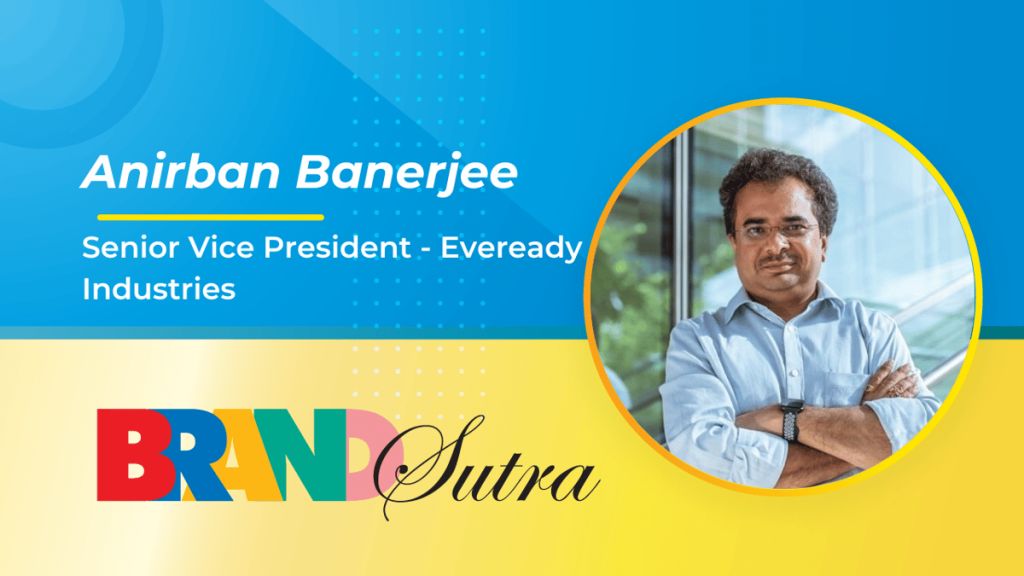
In a world increasingly driven by rechargeable technology, Eveready, a brand synonymous with single-use batteries, continues to hold its charge with a lion’s share of India’s market, which is a hefty 50% in batteries and 65% of India's organised flashlight market. Anirban Banerjee, Senior Vice President and SBU Head of batteries and flashlights, believes that despite shifts in energy consumption, the demand for portable energy solutions will endure.
Lighting The Way
In 1980, Conrad Hubert created the first electric flashlight consisting of dry-cell batteries, forming the Eveready Battery Company. Batteries were used to power handheld lighting devices and other portable gadgets. But consumerism hadn’t quite blown up yet. By 1905, the company best known for its zinc-carbon batteries, entered India.
In the early ‘90s, when India’s economy opened up, Eveready took the country by storm with its iconic Give Me Red campaign that portrayed the incessant energy that the brand carried. “Give Me Red was a symbol of freedom in a society that was yearning to open up,” Banerjee tells us.
As India’s economic policies shifted and opened the doors to new consumer segments, Eveready became a household name. "The resonance with freedom and self-expression was significant back then. And it still is," Banerjee adds, underlining the brand's enduring connection with its consumers.
Yet, the task of staying relevant in a rapidly changing market is an ongoing challenge. "Today, it’s all about relevancy. What worked 20 years ago won’t necessarily work today, but we inherit a strong and powerful legacy."
New Milestones
In the last decade, Eveready has celebrated several important milestones. The brand has evolved from selling zinc carbon batteries to introducing alkaline batteries, launching commercial lighting solutions, and redesigning its iconic logo.
"The launch of our Eveready Ultima alkaline batteries in 2023 marked a significant shift for us. Alkaline chemistry is stronger and longer-lasting, giving users three to four times the power of zinc carbon batteries," Banerjee explains.
The timing couldn’t be better, with India’s economy growing at a rapid pace and high-end electronic devices becoming more commonplace. As the economy grows and more ‘guzzling devices’ like electric trimmers, smart remotes and high-tech toys come into play, the need for stronger, longer-lasting batteries only increases.
Eveready also struck a chord with India’s growing interest in sports by signing Olympic gold medallist Neeraj Chopra as a brand ambassador. "In a country where Bollywood and cricket dominate, choosing an Olympic athlete like Chopra signifies our belief in broader, evolving aspirations," Banerjee says.
Among its innovations, Eveready also introduced the Siren Torch — a torchlight equipped with a safety alarm, making it a practical tool in a country where safety is a major concern. "The Siren Torch is the only one of its kind in India. With just a pull of a chain, it emits a 100-decibel alarm, helping people in need," Banerjee says proudly.
Staying Grounded
In the flashlight market, Eveready has shifted from traditional battery-operated models to rechargeable ones, a trend driven by demand in rural India. "The majority of flashlights are bought by farmers," Banerjee explains, noting that rechargeable flashlights have become a viable alternative for this consumer base.

However, Banerjee emphasises that conventional battery-operated flashlights still hold significant value. "Rechargeable flashlights are great, but what happens if you're camping or stuck in a natural disaster and don’t have access to a charger?" he asks. "You’ll still need the reliability of a battery-operated product.”
Banerjee holds the belief that while batteries will see a transition from zinc-carbon to alkaline and lithium and even rechargeable alternatives, portable batteries will not be displaced easily.
As part of the progression, Eveready is exploring the future of lithium batteries, which offer even longer life. "In America, lithium batteries make up about 5% of the household market. They last much longer, but they come at a higher price point." While India hasn’t fully embraced lithium batteries, Eveready is poised for the shift as consumer demand evolves.
Closing The Loop
With the global conversation around sustainability growing louder, Eveready is taking steps to reduce its environmental footprint. "The battery waste management rules are becoming stricter, and as a responsible manufacturer, we’re experimenting with ways to close the loop on battery disposal," Banerjee shares.
The company has also taken steps towards sustainability in its products. "More than 50% of our torches are made from recycled plastic, and we also make batteries that are lead-free," Banerjee says, adding that the transition from zinc-carbon to alkaline batteries aligns with their eco-conscious goals as they last longer and don’t need to be replaced as often.
Expanding The Reach
Eveready’s dominance in smaller towns has long been a cornerstone of its success. "We’re available in more than 4.5 million outlets across India, and our focus now is on expanding in metro areas," Banerjee says. Over the last 18 months, the company has made inroads into institutional sales, modern trade, and e-commerce.
"Quick commerce is becoming increasingly important, especially for batteries," Banerjee observes. "About 40-45% of our online sales now come from quick commerce channels. This is an area we’re watching closely as it will have a significant impact on our business."

Infinite Possibilities
As Eveready evolves, the company is undergoing a visual transformation as well. "We updated our brand logo in 2023, moving from the elliptical shape to a symbol representing infinity," Banerjee explains. The new tagline, ‘Give Me Power, Give Me Red’ reflects Eveready’s commitment to providing energy solutions for the future.
While batteries account for a majority of their sales, flashlights come next at around 20%. And as they head into the future, Banerjee tells us that he sees massive potential in the commercial lighting segment.